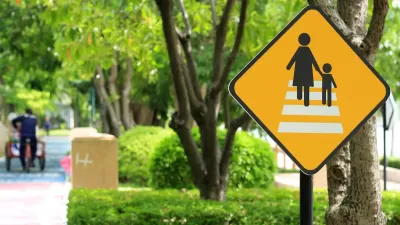Another reason to hate the Monday after daylight-saving time goes into effect: a spike in the number of car crashes and traffic fatalities.

Brian Resnick writes that the only thing worse than losing an hour of weekend when the clock switches to daylight-saving time are the car crashes that follow on Monday.
The problem is the loss of sleep. When the clock springs forward, “[i]t's like giving the entire nation one time zone's worth of jet lag,” writes Resnick. But that’s only the beginning of story. The rest of the story requires the research of a team from Johns Hopkins and Stanford universities, which published a study in 1999 finding the following distressing findings regarding traffic safety on this most somnambulant of days:
Analyzing 21 years of fatal car crash data from the US National Highway Transportation Safety Administration, they found a very small, but significant, increase of road deaths on the Monday after the clock shift in the spring. The number of deadly accidents jumped to an average of 83.5 on the "spring forward" Monday compared with an average of 78.2 on a typical Monday.
Another study in Canada a few years earlier found a similar increase, and the same results were found in Great Britain the decade previous. On the other side of the calendar, a study from 2007 found that drivers are more likely to strike pedestrians at the end of daylight-saving time, when it gets darker earlier.
In answer to the question of whether we should all stay home from work and avoid getting behind the wheel on the Monday after daylight-saving time starts, according to Resnick, “[the] takeaway is that even small decreases in our sleep times can stress our bodies,” and we humans have to be aware of our fragility.
FULL STORY: Another reason to hate daylight saving time: car crashes

Alabama: Trump Terminates Settlements for Black Communities Harmed By Raw Sewage
Trump deemed the landmark civil rights agreement “illegal DEI and environmental justice policy.”

Planetizen Federal Action Tracker
A weekly monitor of how Trump’s orders and actions are impacting planners and planning in America.

The 120 Year Old Tiny Home Villages That Sheltered San Francisco’s Earthquake Refugees
More than a century ago, San Francisco mobilized to house thousands of residents displaced by the 1906 earthquake. Could their strategy offer a model for the present?

Opinion: California’s SB 79 Would Improve Housing Affordability and Transit Access
A proposed bill would legalize transit-oriented development statewide.

Record Temperatures Prompt Push for Environmental Justice Bills
Nevada legislators are proposing laws that would mandate heat mitigation measures to protect residents from the impacts of extreme heat.

Downtown Pittsburgh Set to Gain 1,300 New Housing Units
Pittsburgh’s office buildings, many of which date back to the early 20th century, are prime candidates for conversion to housing.
Urban Design for Planners 1: Software Tools
This six-course series explores essential urban design concepts using open source software and equips planners with the tools they need to participate fully in the urban design process.
Planning for Universal Design
Learn the tools for implementing Universal Design in planning regulations.
Clanton & Associates, Inc.
Jessamine County Fiscal Court
Institute for Housing and Urban Development Studies (IHS)
City of Grandview
Harvard GSD Executive Education
Toledo-Lucas County Plan Commissions
Salt Lake City
NYU Wagner Graduate School of Public Service





























